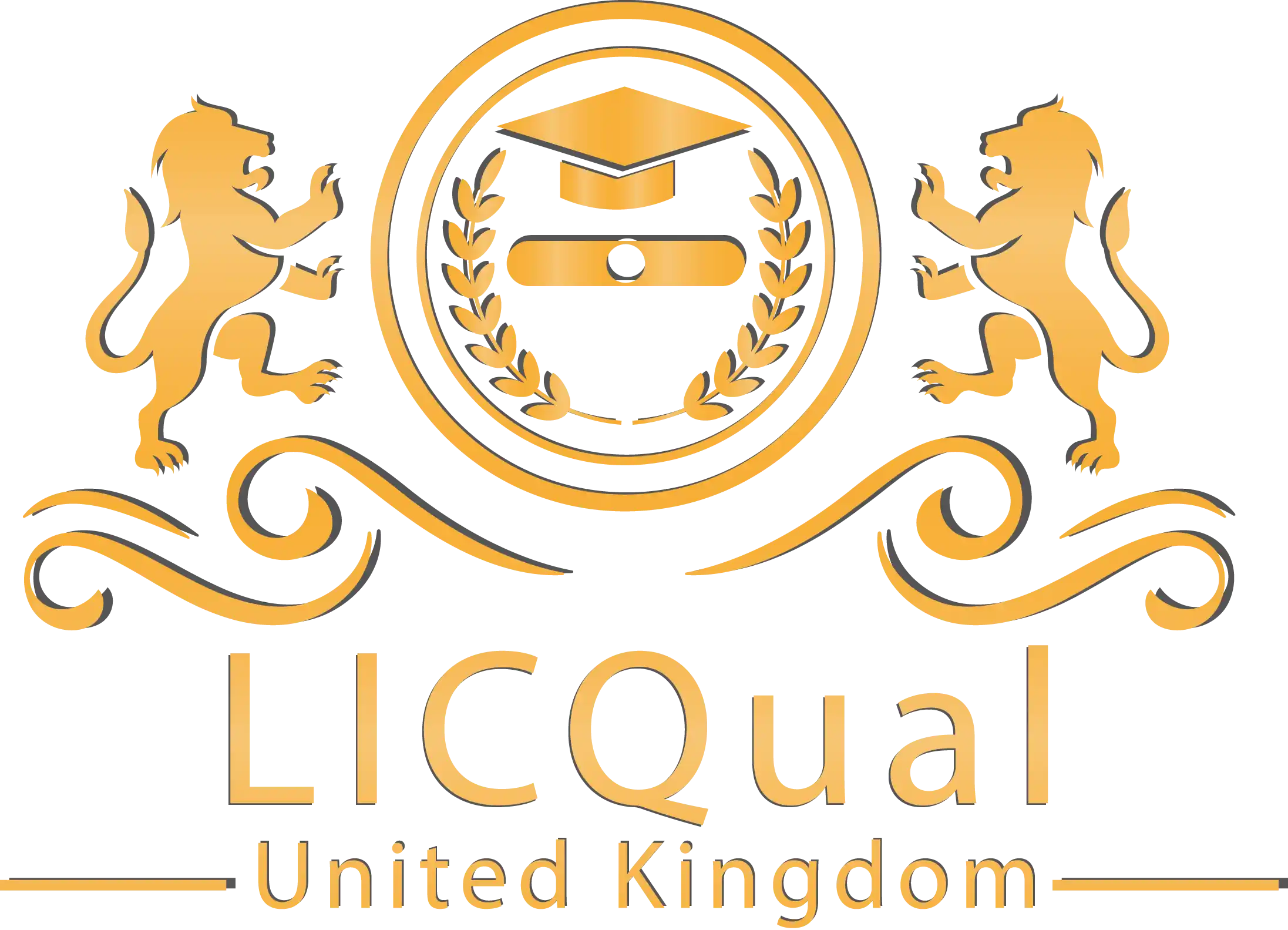The LICQual UK Level 6 Diploma in Airport, Airline and Aviation Safety is a UK‑accredited qualification designed for professionals who want to advance their expertise in aviation safety, compliance, and leadership. This internationally recognized diploma provides the advanced knowledge and practical skills required to meet global aviation safety standards and prepare for senior roles across airports, airlines, and aviation authorities.
In today’s fast‑evolving aviation industry, safety is not just a regulatory requirement—it is the foundation of operational excellence and passenger trust. The Level 6 Diploma in Airport, Airline and Aviation Safety UK equips learners with the ability to design, implement, and manage advanced safety systems that align with ICAO, EASA, FAA, and IATA frameworks. From strategic safety management and international aviation law to risk assessment, finance, and sustainable practices, this program ensures learners gain the competencies that global employers demand.
The course is structured into six specialized units, covering areas such as advanced aviation safety systems, global regulatory compliance, leadership and safety culture, and innovation in sustainable aviation practices. By completing this Aviation Safety Diploma Level 6 qualification, learners will be able to lead safety initiatives, manage compliance audits, and implement risk management strategies that directly impact airline and airport operations.
What makes the LICQual UK Level 6 Diploma in Airport, Airline and Aviation Safety unique is its balance of academic depth and real‑world application. Learners not only gain theoretical knowledge but also develop practical skills to handle complex safety challenges in international aviation. This UK‑accredited diploma is ideal for professionals aiming to progress into roles such as aviation safety manager, compliance officer, airline operations leader, or aviation consultant.
If you are ready to take your career to the next level with a qualification that combines credibility, recognition, and practical expertise, the LICQual UK Level 6 Diploma in Airport, Airline and Aviation Safety is your pathway to global success.
Course Overview
Qualification Title
LICQual UK Level 6 Diploma in Airport, Airline and Aviation Safety
Total Units
6
Total Credits
120
GLH
480
Qualification #
LICQ2201256
Qualification Specification
To enroll in the LICQual UK Level 6 Diploma in Airport, Airline and Aviation Safety, applicants must meet the following criteria:
|
Qualification# |
Unit Title |
Credits |
GLH |
|---|---|---|---|
|
LICQ2201256-1 |
Strategic Airport and Airline Safety Management and Operational Planning |
20 |
80 |
|
LICQ2201256-2 |
International Aviation Law, Global Policy, and Regulatory Compliance |
20 |
80 |
|
LICQ2201256-3 |
Advanced Aviation Safety Systems and Risk Management |
20 |
80 |
|
LICQ2201256-4 |
Aviation Finance, Safety Investment Strategies, and Resource Optimization |
20 |
80 |
|
LICQ2201256-5 |
Leadership, Human Resource Development, and Safety Culture in Airline Operations |
20 |
80 |
|
LICQ2201256-6 |
Innovation, Emerging Technologies, and Sustainable Practices in Aviation Safety |
20 |
80 |
By the end of this course, learners will be able to:
1. Strategic Airport and Airline Safety Management and Operational Planning
By the end of this unit, learners will be able to:
- Apply ICAO Annex 19 principles to design and implement strategic safety management frameworks.
- Evaluate operational planning processes, including scheduling, routing, and resource allocation, with a safety‑first approach.
- Integrate safety performance indicators (SPIs) into long‑term airport and airline planning.
- Conduct advanced risk assessments to identify vulnerabilities in complex operations.
- Develop strategic safety plans that balance compliance, efficiency, and passenger protection.
- Critically assess the effectiveness of Safety Management Systems (SMS) in global aviation.
2. International Aviation Law, Global Policy, and Regulatory Compliance
By the end of this unit, learners will be able to:
- Interpret and apply international aviation treaties, conventions, and bilateral agreements.
- Analyze the impact of ICAO, EASA, FAA, and IATA regulations on airport and airline operations.
- Evaluate compliance strategies that align with international aviation law and corporate governance.
- Assess the implications of global aviation policies on safety, security, and sustainability.
- Demonstrate awareness of ethical, cultural, and environmental considerations in aviation law.
- Formulate compliance frameworks that ensure adherence to international regulatory standards.
3. Advanced Aviation Safety Systems and Risk Management
By the end of this unit, learners will be able to:
- Implement advanced Safety Management Systems (SMS) in line with ICAO Doc 9859.
- Conduct predictive and proactive risk assessments using quantitative and qualitative tools.
- Analyze safety data to identify hazards, trends, and systemic vulnerabilities.
- Integrate safety systems with quality, compliance, and security frameworks.
- Evaluate the effectiveness of safety audits, investigations, and continuous improvement processes.
- Apply advanced risk management strategies to enhance operational resilience.
4. Aviation Finance, Safety Investment Strategies, and Resource Optimization
By the end of this unit, learners will be able to:
- Analyze aviation finance principles and their impact on safety investment decisions.
- Evaluate cost–benefit models for safety technologies, training, and infrastructure.
- Develop financial strategies that balance profitability with safety and compliance.
- Assess the influence of global economic trends on aviation safety funding.
- Formulate investment strategies that optimize resource allocation for sustainable safety performance.
- Justify safety investments to stakeholders and regulators with evidence‑based analysis.
5. Leadership, Human Resource Development, and Safety Culture in Airline Operations
By the end of this unit, learners will be able to:
- Demonstrate leadership strategies that foster a strong safety culture across airline and airport operations.
- Evaluate the role of human factors and Crew Resource Management (CRM) in aviation safety.
- Design HR development programs that enhance safety awareness and professional competence.
- Apply organizational psychology principles to improve decision‑making and communication.
- Assess the impact of leadership styles on safety performance and employee engagement.
- Promote continuous improvement and accountability within safety‑critical teams.
6. Innovation, Emerging Technologies, and Sustainable Practices in Aviation Safety
By the end of this unit, learners will be able to:
- Evaluate the role of emerging technologies such as AI, big data, and automation in aviation safety.
- Assess the impact of digital transformation on safety monitoring, reporting, and compliance.
- Integrate sustainable practices into safety management systems to meet global environmental goals.
- Analyze case studies of innovative safety solutions and their measurable outcomes.
- Formulate strategies for adopting new technologies while managing associated risks.
The LICQual UK Level 6 Diploma in Airport, Airline and Aviation Safety is designed for aviation professionals, managers, and aspiring leaders who want to advance their expertise in safety management, compliance, and international aviation standards. This UK‑accredited and globally recognized qualification is ideal for those seeking senior roles in airports, airlines, and aviation authorities. With a strong focus on leadership, innovation, and regulatory compliance, the program prepares learners to meet the complex demands of modern aviation safety.
1. Aviation Safety Managers and Officers
- Professionals responsible for implementing and monitoring Safety Management Systems (SMS).
- Safety officers aiming to progress into senior leadership and compliance roles.
- Individuals tasked with hazard identification, risk assessment, and safety audits.
- Practitioners seeking advanced knowledge of ICAO, EASA, and FAA safety frameworks.
- Aviation professionals preparing for global safety leadership positions.
2. Airline Operations and Compliance Leaders
- Managers overseeing airline operations with a focus on safety and efficiency.
- Compliance officers ensuring adherence to international aviation regulations.
- Professionals integrating safety into operational planning and decision‑making.
- Leaders responsible for audits, inspections, and regulatory reporting.
- Individuals aiming to strengthen organizational safety culture.
3. Airport Operations and Technical Specialists
- Airport managers and supervisors responsible for safety and security operations.
- Engineers and technical staff working on aircraft maintenance and inspections.
- Professionals seeking advanced knowledge of risk management and compliance.
- Specialists aiming to integrate safety into engineering and technical operations.
- Learners preparing for leadership roles in airport safety management.
4. Senior Aviation Executives and Decision‑Makers
- Airline executives responsible for strategic safety planning and investment.
- Leaders balancing profitability with safety and compliance obligations.
- Professionals managing aviation finance and resource optimization.
- Executives preparing for board‑level discussions on safety and sustainability.
- Decision‑makers seeking to align safety with long‑term business strategy.
5. Government, Policy, and Regulatory Personnel
- Aviation regulators and inspectors enforcing international safety standards.
- Policy makers drafting or implementing aviation safety regulations.
- Government officials working with ICAO, EASA, or national aviation authorities.
- Professionals ensuring compliance with global aviation law and policy.
- Individuals seeking deeper knowledge of international aviation governance.
6. Aviation Training and Human Resource Leaders
- HR managers designing training programs for aviation safety awareness.
- Trainers delivering advanced safety and compliance modules.
- Leaders promoting safety culture across airline and airport organizations.
- Professionals applying organizational psychology to improve safety performance.
- Individuals preparing to lead aviation workforce development initiatives.
7. International Students and Career Advancers
- Learners seeking a UK‑accredited Aviation Safety Diploma for global recognition.
- Professionals aiming to transition into senior aviation safety roles.
- International students preparing for careers in airline safety and compliance.
- Career advancers looking for qualifications aligned with ICAO and IATA standards.
- Individuals motivated to pursue long‑term leadership roles in aviation safety.
Assessment and Verification
All units within this qualification are subject to internal assessment by the approved centre and external verification by LICQual. The qualification follows a criterion-referenced assessment approach, ensuring that learners meet all specified learning outcomes.
To achieve a ‘Pass’ in any unit, learners must provide valid, sufficient, and authentic evidence demonstrating their attainment of all learning outcomes and compliance with the prescribed assessment criteria. The Assessor is responsible for evaluating the evidence and determining whether the learner has successfully met the required standards.
Assessors must maintain a clear and comprehensive audit trail, documenting the basis for their assessment decisions to ensure transparency, consistency, and compliance with quality assurance requirements.







